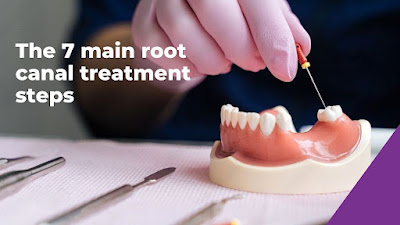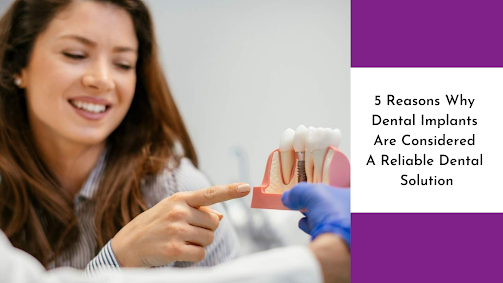The 7 main root canal treatment steps
Root canal treatment is carried out to treat a tooth that gets infected by bacteria. This process involves taking out damaged or infected pulp within your tooth and sealing it to prevent any reinfection. A root canal therapy stabilizes the tooth and saves it from getting removed.
When do you need root canal treatment?
Listed below are some symptoms that indicate the need for a root canal treatment:
Severe tooth pain that doesn’t go away
Swollen gums and jaw
Tooth discoloration
A chipped tooth
Prolonged sensitivity to heat and cold
The 7 main root canal treatment steps
Given below are the steps included in a root canal treatment:
Anesthesia
Usually, before beginning the root canal treatment, the endodontist examines the extent of the infection using an x-ray and takes a radiograph of the tooth. After that, local anesthesia is administered to the site to numb the tooth and surrounding area.
Dental dam placement
After the tooth and its surrounding area is numb, a small protective sheet called a “dental dam” is placed over the area. This is done so that the affected tooth remains isolated and free of saliva during the procedure. It also prevents the gums and rest of the mouth from being affected by the procedure.
Disinfecting and drilling
Then, the tooth is cleaned, followed by drilling, which involves making a hole into the crown of the tooth. This is done in order to gain access to the pulp.
Pulp removal
After the pulp is exposed, the infected pulp tissue is removed using special root canal tools, and canals are shaped. The decontaminated teeth and surrounding area are coated with a topical antibiotic to protect them from future microbial invasion.
Filling the canals.
Next, the empty canals are filled with a flexible, rubber-like, thermoplastic filling called gutta-percha. This temporary filling is done to protect the canal from any damage that can be caused by saliva during the healing process.
Sealing the tooth.
After the gutta-percha is applied to the root canals, it is set in place by an adhesive cement sealer. The sealer is very important to keep the tooth from becoming reinfected later.
Adding the crown
After the root canal has been healed, extra enamel filling is taken out, and a permanent crown is crowned or capped over it. This installation of the crown provides the tooth with the required support and enhances its strength and stability.
What are the advantages of having a root canal procedure?
A root canal therapy comes with the following advantages:
It prevents infection from spreading to other teeth.
Relieves painful symptoms of the infected tooth.
Reduces risk of jawbone damage.
Visually appealing results.
It is an efficient, pain-free, and cost-effective procedure.
What is the cost of root canal treatment?
The cost of root canal treatment varies for every individual depending on the following factors:
Type of the tooth infected-
The severity of the condition
Location of the clinic
Experience of the healthcare provider
Material of the crown
Medicines and follow-ups
At Grandview Dental Clinic, we provide solutions to your oral problems at an affordable cost after a detailed consultation. We diagnose root canal problems with utmost precision and use state-of-the-art technology to make the process painless and efficient. So if you are experiencing acute tooth pain, book an appointment with us to get the best treatment.




Comments
Post a Comment